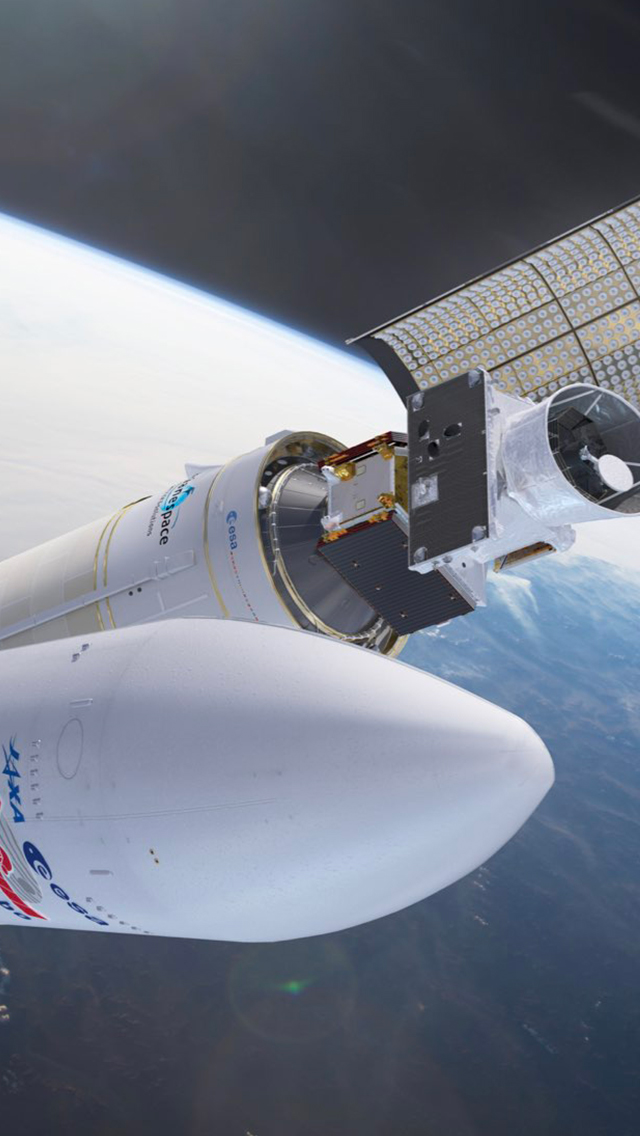Ariane 5: A unique launcher for iconic missions – BepiColombo
17.08.2023

Friday October 19, 2018. Night had already fallen in French Guiana when an immense shaft of incandescent light pierces the pitch-black sky. Ariane 5 had just lifted off from its launch pad carrying the BepiColombo mission heading to Mercury, the smallest planet in the Solar System, which it will reach in … 2025.
Mercury has fascinated scientists for a long, long time. It is the closest planet to the sun and therefore the hottest, but it is also the least explored and in many ways the most mysterious. This is because of its situation in relation to the Sun – “only” 58 million kilometers away –, which is so bright that it is impossible to correctly study Mercury from Earth. The only solution is therefore to send probes out to it.
On that day, the BepiColombo probe, a joint initiative of the European Space Agency (ESA) and the Japanese Space Exploration Agency (JAXA), was carried aboard a rather special Ariane 5 capable of taking it to a hyperbolic escape orbit, enabling it to pull itself free of Earth’s “gravity well” and begin its journey to Mercury at an absolute velocity of close to 40,000 km/h.
Whereas Ariane 5 usually launches missions of about 10 tons to geostationary transfer orbit (GTO), this time it had to launch a 4-ton payload, while driving the launcher to a velocity greater than that of a traditional launch, so that the satellite could escape from Earth orbit.
This was the first time that an ECA version of Ariane 5 had reached this type of orbit; the previous time an Ariane 5 had placed an outgoing spacecraft on an escape trajectory had been with an Ariane 5G+ version for the Rosetta mission in March 2004.
Specific control and propulsion adjustments were therefore needed and, even if the launcher’s structure was not modified, this required additional checks occupying about 30 ArianeGroup engineers for a period of two years.
This mission was also the first opportunity to use the increased thrust from the Vulcain 2 engine (+2.25%), which had been decided on as part of the Ariane 5 ECA launcher performance improvement program.
Twenty-six minutes after lift-off, the Operations Director made the keenly awaited BepiColombo separation announcement, indicating that the Ariane 5 upper stage had released the probe and placed it on its transfer trajectory through the solar system to Mercury, propelling it at an absolute velocity of 10.99 km/s (39,570 km/h), or 1.15 km/s (4,140 km/h) more than for the usual GTO.
And then?
For BepiColombo, this launch was only the beginning of an extremely long journey. This is all down to the laws of celestial mechanics… Placing a probe in orbit around Mercury involves following a lengthy route plotted several decades ago by the Italian scientist Giuseppe Colombo (1920–1984) after whom the mission was named.
To reach Mercury, the closest planet to the Sun, and in order to counteract its staggering gravity, BepiColombo would need a phenomenal quantity of energy and a series of gravity assist flybys of three planets: Earth, in April 2020; Venus, in October 2020 and August 2021; and Mercury itself six times between October 2021 (exactly on the planned date!) and January 2025. By then, the probe will have travelled 9 billion kilometers.
BepiColombo will then use its own engines and solar panels to enter its final orbit around Mercury in December 2025 and begin investigations for its remaining 2 to 3 years of life. The Mercury Transfer Module (MTM) will release its two scientific orbiters: the Mercury Magnetospheric Orbiter (MMO), named MiO by JAXA, which will study the planet’s outer environment (magnetosphere, atmosphere, dust, solar wind); and ESA’s Mercury Planetary Orbiter (MPO), which will concentrate on Mercury’s surface and interior…